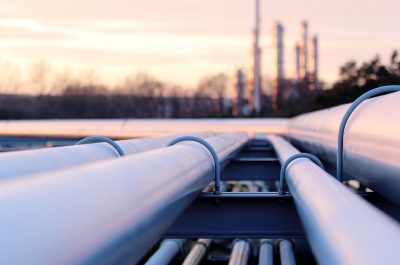Survival of the most adaptable – A Darwinian energy transition
How should Darwinian evolution – the concept of survival of the most adaptable – inform the decisions we need to make in our energy transformation?
In the documentary series “Alone”, ten ‘’survivalists’’ are dropped off in some remote and forsaken place, and they must stay there for as long as possible. The best survivor wins lots of money and a little self-satisfaction. I’m not very far into the series, however it appears those most likely to do well are the most adaptable, those making the coolest-headed decisions, and those who build redundancy and variety into their resource supply. Perhaps we should be thinking about our energy system in the same way.
The human body is an energy system of sorts. It needs water, shelter, heat and food. It can handle abundance, but not shortage. Taking food as an example, it seems from Alone that the body can survive on seaweed and mollusks, but it won’t thrive. To do so it needs a variety of proteins, carbohydrates, vitamins, and minerals.
Our complex energy system also has needs. We need transport, industrial and home heating and cooking, lighting etc. We use a range of resources to provide for these needs. Liquid fuels for transport, gas for industrial and home heat and cooking and electricity can provide for most.
Our energy system is in transition due to the imperative to decarbonise, the economics of renewable technologies, and the prevailing winds of customer choice. While much progress has been made in decarbonising electricity systems around the world, questions remain about the best way to transition the whole energy system. When, where and how should we transition away from coal, oil and gas resources to provide for our various energy needs? How do we decarbonise transport and industrial and home heating in a way that best serves the long-term interests of energy customers and the environment?
One common suggestion is that we should first get the carbon out of electricity, and then transition all other energy needs (such as transport and heat) to electricity as a resource. This however feels like the kind of decision that could give rise to future regrets. Reviving the analogy with the documentary series ‘Alone’ – it’s like the kind of impulsive ‘eggs in one basket’ decision that usually leads to contestants going home.
Decisions amidst uncertainty
Intuition is not a very convincing or reliable tool for decision making, so let’s dig down a little into what is at play here.
Our current energy system uses a range of resources that are essentially well suited to their purpose. Electricity requires a fine balance of supply and demand in real time, with the network capacity to manage peak events as well as some redundancy and flexibility in certain circumstances. It can be costly to add to the peak capacity of networks, as we all found out when air conditioning load was growing rapidly in the early noughties. Adding flexible loads to the electricity system, on the other hand, could be quite beneficial. More energy put on the system means fixed assets are better utilised. The cost is smeared across more kWh, and the cost per kWh is reduced.
This story of better utilisation of network assets is likely to play out with the electrification of flexible loads like small vehicles (assuming we get the right smart charging and pricing settings in place). The same can’t be said for some of the less flexible loads, such as home heating and cooking, as well as some industrial loads. Home heating in particular is extremely seasonal and peaky. Gas network infrastructure has been well placed to handle these peaks, given the significant capacity for energy throughput on the gas system, coupled with the fact that gas is energy stored until needed (unlike the electricity system which must balance in real time). It is unclear at this stage what the full practical electricity system costs might be of electrifying this inflexible load in addition to significant flexible load. However, the Gas Vision 2050 – Delivering a Clean Energy Future report shows using renewable gas like green hydrogen to decarbonise the gas system can be done at half the cost of electrification.
The environmental imperative to decarbonise is also critical. The gas system is currently less polluting than the electricity system. However, the rate of decarbonisation of the electricity system will determine how long this will be the case. The technologies and know-how exist to decarbonise the reticulated gas system by shifting to renewable gases like green hydrogen and biomethane. The challenge is to demonstrate a pathway to decarbonisation of this system that better meets the long-term interests of energy customers – financially and environmentally – than the electrification pathway.
This challenge is being addressed, and should be given at least some time to be met, by the gas network industry in Australia and overseas:
- Significant effort is going into scaling up hydrogen production and reducing its cost. See for example Germany’s national hydrogen strategy
- Gas distribution networks are testing and scaling up the blending of hydrogen into existing networks and the transition to 100 per cent hydrogen networks. See for example the H21 program of work led by Northern Gas Networks in the UK, or Australian led projects such as AGIG’s Australian Hydrogen Centre work, Jemena’s Western Sydney green gas project and ATCO’s Hydrogen Blending Project in WA.
It is good news that governments and decision makers appear to be removing barriers to repurposing gas infrastructure for a renewable gas future. For example, regulations applying to gas networks are being extended to cover hydrogen. Supporting the further development of a renewable gas and hydrogen industry in Australia is an important step to keep all options open as we continue to work through the complexity of this monumental energy system transformation. A key policy mechanism to facilitate this could be a national renewable gas target.
The attractiveness of simplistic phrases like ‘electrify everything’ should be met with a healthy degree of skepticism, and the kind of cool headed, evidence-based decision making that keeps survivalists going in the wild.
The best outcome for energy customers and the environment is likely somewhere sensibly in between the electrification of everything and the decarbonisation of liquid and gas fuels. Keeping the diversity and adaptability of our resources open until the evidence is clearer will help us make these decisions with fewer future regrets.

